Hibiscus is a gorgeous plant with bell-shaped flowers. Hardy hibiscus plants make excellent garden specimens, even though tropical types typically grow indoors. This hibiscus prefers moist, well-drained soil in full sun or partial shade as an annual or perennial herbaceous plant. There are over 200 species of hibiscus, as well as several cultivars, which range from white to red, pink, yellow, and orange at maturity.
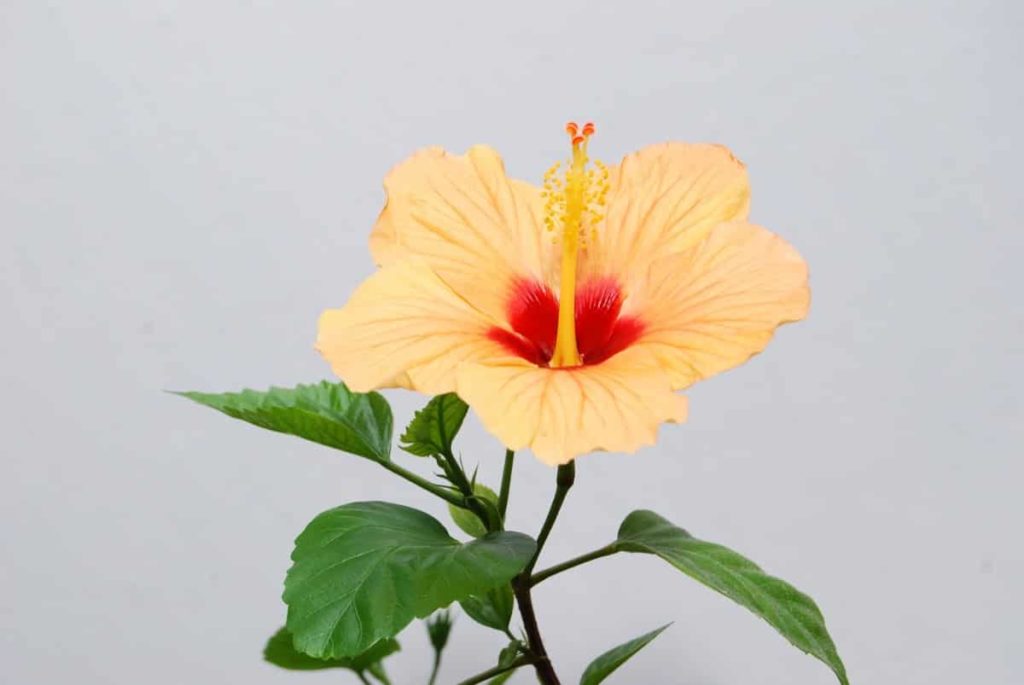
Tropical hibiscus varieties are ideal for people who live in a warm climate and want an impressive houseplant. However, it will be best to opt for a hardy variety or the shrubby rose of Sharon if you live in a cool climate, as they are easier to grow and can withstand colder winter temperatures. It doesn’t matter what variety you grow; butterflies and hummingbirds love hibiscus flowers.
How to grow Hibiscus plants and care for them
Types of Hibiscus
Hibiscus plants come in over 200 varieties worldwide; each is different in size, shape, and color. As a result, it isn’t easy to differentiate between different types of Hibiscus flowers when someone refers to a Hibiscus plant. However, many hibiscus species can be divided into three categories:
Hardy Hibiscus
Hardy hibiscus is also known as swamp rose mallow, a cold-hardy, wetland plant commonly found in swamps, marshes, or the moist areas around rivers and ponds. Depending on the species, the flowers can grow as large as four inches and as wide as 10 inches, and the plant can grow to be between two and 10 feet tall.
Winter is not a problem for these hardy hibiscus plants. In most cases, the plant is pruned down before winter begins, and new growth will form from the existing root system. Pruning should be done approximately six inches above the ground. This hibiscus flower still blooms in red, pink, and white, but it is a bit less vibrant in color. As a result of this muted color effect, the leaves are also paler green than in the tropical variety.
Rose of Sharon
A shrub or small hibiscus tree, the rose of Sharon is also known as shrub althaea. Due to its showy flowers, this variety is widely planted as an ornamental. The plant can reach a height of three meters (10 feet) and has a low-branching pyramidal growth habit. It has a variety of mallow-like flowers, from white to pinkish lavender to purple, usually with a crimson base; some varieties have double flowers.
While the leaves and flowers of this flowering shrub (or small tree) are smaller, they can still grow up to eight feet in height and survive temperatures below freezing. A combination of full sun, partial shade and acidic, well-draining soil is best for this perennial hibiscus.
In case you missed it: Hibiscus Grafting Methods; Pruning Time; Training
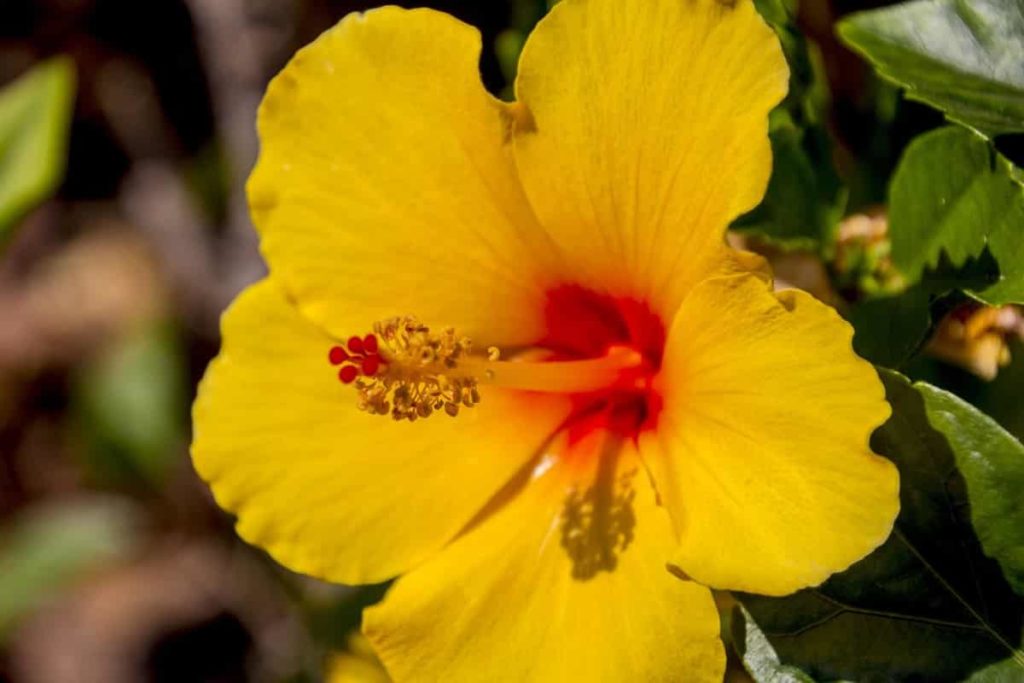
Tropical Hibiscus
The tropical hibiscus, or Chinese hibiscus, is a tropical plant that grows best in warm climates. When the hot and dry climate, tropical hibiscus blooms between summer and fall. Flowers on this hibiscus range from three to ten inches in diameter and can grow up to 15 feet tall.
A variation of tropical hibiscus cannot withstand cold temperatures or low climates. The most common colors of their blooms are red, orange, yellow, pink, and white. A tropical hibiscus also has glossy, deep-green foliage that protects it from the intense heat of the tropics. When the weather turns cold, these tropical plants will die if not grown indoors in a greenhouse atmosphere.
Starting Hibiscus from seed
The hardy hibiscus, roselle, and cranberry varieties are relatively easy to grow from seed at home. Chinese hibiscus grows slowly, so starting with nursery plants is a good idea since it is readily available at garden centers. Stem cuttings can be used to propagate any hibiscus. Hibiscus seeds have a hard outer layer that can slow germination. Seeds need to be soaked in water for one whole night or sandpapered or knifed before sowing to speed up the process. Use a heat mat to maintain the soil around 24°C-27°C for best germination.
Preparing healthy soil for Hibiscus
The hardy hibiscus can tolerate soils from wet to dry but prefers moist but well-draining soil. Add organic mix to the soil before planting to ensure active biology and excellent drainage. Among the natural amendments are compost, leaf mold, soil conditioner, and peat moss. Neutral or slightly acidic soil is ideal for hibiscus. Sulfur or a sulfur compound like aluminum sulfate can be added to the soil if the pH needs to be lowered.
Dolomite and ground agricultural limestone are common liming materials used to raise pH. The best soils tend to be loams and sandy loams. Mulch or other organic matter can improve soil texture if it contains too much sand. In heavy clay soils, sand or gypsum can help improve the soil, but clay soils should be avoided. In clay soil areas, raised beds can also help prevent drainage problems.
How to choose Hibiscus
Hibiscus plants put on a spectacular display in the garden, both tropical and perennial. They have dark green leaves, sometimes glossy, and pink, yellow, orange, lavender, red, white, or bi-color flowers. They can only be planted indoors during the winter and need full sun. However, they make excellent container plants in cooler areas and are sometimes sold as little hibiscus trees or standards.
Hibiscus perennials can survive the winter. In most species, the flowers are more prominent, and the leaves are lighter green, but the size of the blossoms and the color of the leaves varies significantly from species to species. Some plants will grow up to 8 feet in height. In mid to late summer, perennial hibiscus blooms. Typical flower color is white, pink, lavender, red, or burgundy. Choose a dwarf variety if you have a miniature garden.
In case you missed it: Hibiscus Cultivation Information guide
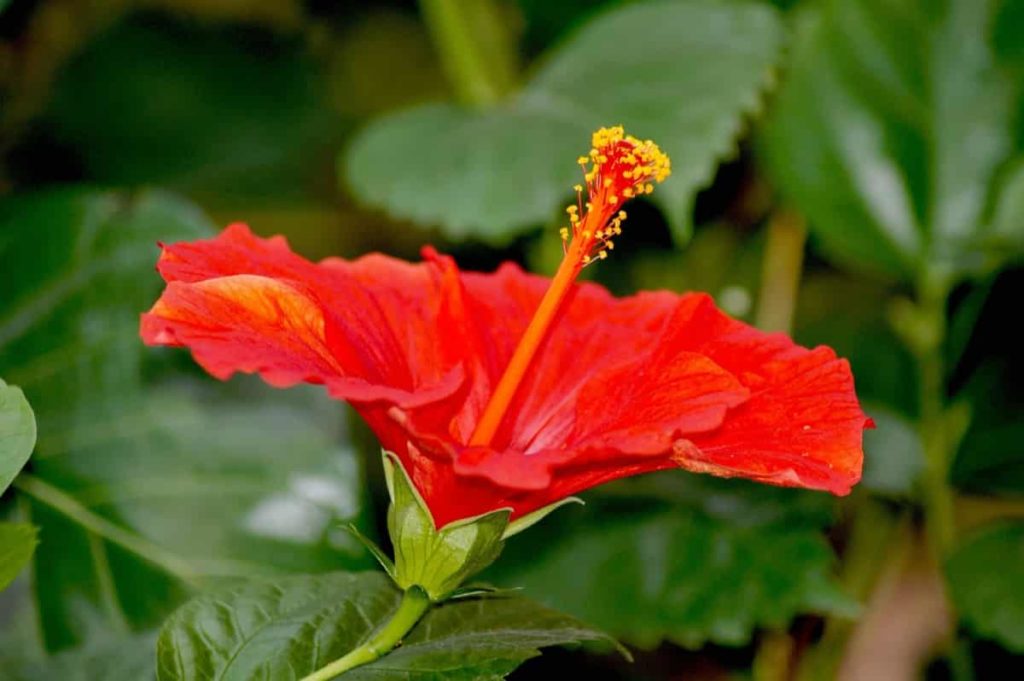
When to plant Hibiscus
Warm-weather plants such as tropical hibiscus thrive in tropical climates. Therefore, keep it inside until nighttime temperatures consistently exceed 10°C. Perennial hibiscus plants should be planted in the spring to establish a solid root system during the growing season. A perennial hibiscus planted in the fall will not return as reliably the following spring as one planted earlier in the year.
Planting Hibiscus in the garden
Use hibiscus as a focal point in flower beds, a beneficial hedgerow, or a mass around a water feature. The size of the hibiscus varies within the genus, except for dwarf varieties, so most cultivars should be planted with a spacing of 3 to 6 feet apart. It is generally recommended that hibiscus grows in full sun, although some hardy species can also tolerate some shade. Planting hibiscus in the garden involves the following steps:
- Create a peaceful environment for roots to settle by digging a hole larger than the root ball of your plant and loosening the soil around it
- Let the soil absorb the water by filling the hole halfway with water.
- Before lowering the hibiscus into the new hole, loosen the root ball with your fingers or a trowel.
- Push the soil around the plant, filling the hole and pressing down to eliminate air.
- Keep the soil moist around the young plant after planting. Once established, hardy hibiscus is drought tolerant.
Growing Hibiscus from plant
Gardeners can add exotic allure to their gardens by growing hibiscus. Hibiscus perennials grow like shrubs but die back to the ground each winter. In all but the warmest climates, tropical hibiscus must be brought indoors during the winter. Tropical hibiscus blooms for longer than perennial hibiscus, but both have large, colorful flowers. A warm, sunny spot away from strong winds is ideal for growing outdoor hibiscus in moist, well-drained soil. Compost based on loam and free of peat is ideal for growing them in pots.
Indoor hibiscus should be grown in a bright area away from direct sunlight. In bright but not sunny bathrooms, they need a minimum temperature of 7-10°C and a high humidity level. Growing hibiscus in pots filled with moist but well-drained soil or compost is best. Keep it fresh by repotting every two to three years.
- Choose the right hibiscus for your garden.
- Depending on the type of hibiscus, you should plant it in full sun in spring, late spring, or early summer.
- Prepare the soil before planting perennial hibiscus for healthy root growth and better flowers.
- Plant tropical hibiscus in containers filled with this prepared potting mix.
- When planting and throughout the growing season, water plants thoroughly.
- Feed your plants an all-purpose fertilizer based on the pH value and nutrient content of your soil.
- Deadhead and prune hibiscus for the best blooms.
- During the winter, bring tropical hibiscus indoors.
In case you missed it: How to Start Rose Farming in the USA: A Step-by-Step Production Guide for Planting to Harvesting
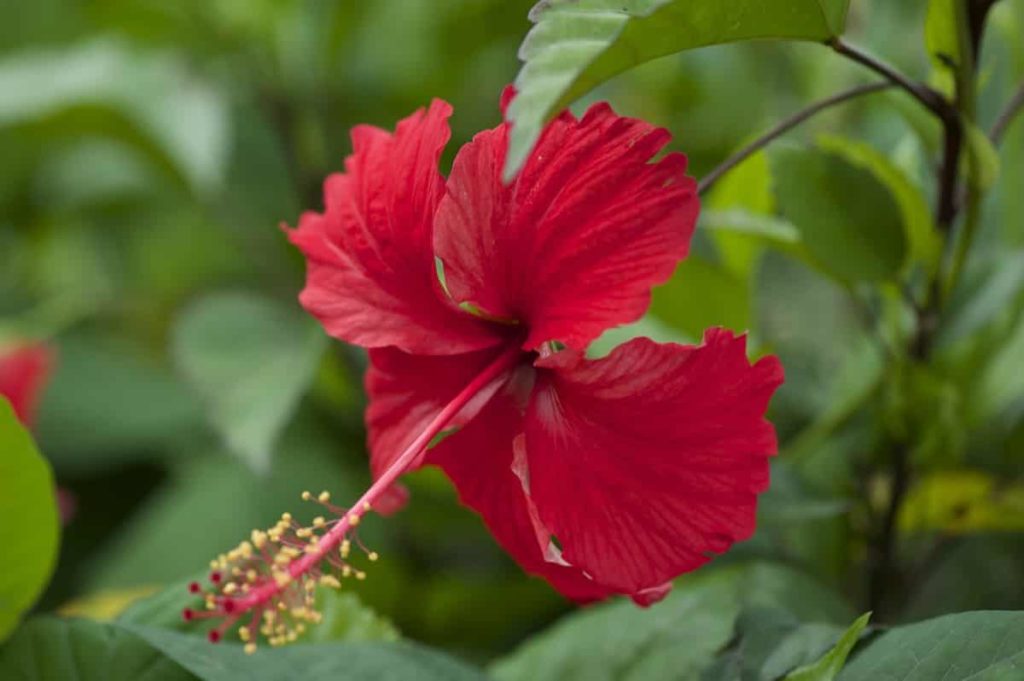
Growing Hibiscus in containers
Hibiscus plants are often grown in containers. They can move the hibiscus plant to ideal locations depending on the time of year because it grows in a container. For beautiful blooms, ensure the plants get six hours of sunlight daily. Tropical hibiscus thrives in warm, humid conditions, but be sure to shade them in the afternoon when it gets too hot.
It is easy to do this with containers again. Growing hibiscus in a container requires a snug fit. When repotting, give the hibiscus a little more room if slightly root bound in the pot. A growing hibiscus plant needs excellent drainage to thrive.
Caring Hibiscus
Light
Bright conditions are best for growing hibiscus. These plants benefit from the intense, dry heat of filtered sunlight. You may need to move the plant to a sunnier location if it isn’t producing many blooms. Indoor tropical hibiscus needs bright, indirect sunlight but not strong, direct sunlight. As the warmer weather approaches, gradually acclimate your plants to the brighter conditions outside.
Soil
All hibiscus thrive in a well-drained, fertile, moist, loamy soil. These hibiscuses are an excellent choice for sites that are too wet for other plants because they are native to wetlands. In general, hibiscus prefers a slightly acidic soil pH, but the rose of Sharon can tolerate slightly alkaline soil. The acidity level in the soil can affect the color of hibiscus flowers.
It may be that the soil’s pH is off, which interferes with plants’ ability to absorb nutrients, even if you have already fertilized. If this is the case, perform a soil test and seek professional advice. You should not apply additional fertilizer or adjust the pH before getting clear recommendations from a soil test. It is beneficial to amend fertile soil with organic matter if it is nutrient-poor.
Watering
It is essential to keep hibiscus moist since they are thirsty plants. Tropical hibiscus requires regular watering in the growing season from spring to early autumn. During dormant periods, watering should be reduced significantly. Ensure the top inch of potting mix dries out thoroughly before watering container-grown plants. It is also problematic to have saturated soil, so make sure that containers have adequate drainage holes. Water the hibiscus daily, depending on the weather, for an abundance of blooms. In the absence of a pond or wet area, water the hardy hibiscus regularly to keep them moist.
Temperature and humidity
Hardy hibiscus and rose of Sharon can grow in cool, temperate climates. These plants can thrive in temperatures ranging from 16°C to 33°C and withstand low temperatures. Bring container-grown plants indoors when temperatures drop, and frost is a possibility. Bathrooms are a good location for these plants because of their higher humidity requirements. It is best to keep tropical varieties indoors in regions where temperatures below 10°C are likely to kill them.
Deadhead
It is possible to encourage reblooming by removing old flower blossoms before they form seed heads. Nevertheless, deadheading can result in the plant redirecting its energy to produce new blooms rather than seeds. Deadhead your hibiscus by snapping off the stem below faded or wilted blossoms, just at the point where it connects with the main stem. Make sure the blades of your bypass pruners are clean and sharp enough to make precise cuts when deadheading.
In case you missed it: Lily Flower Farming Info In Greenhouse
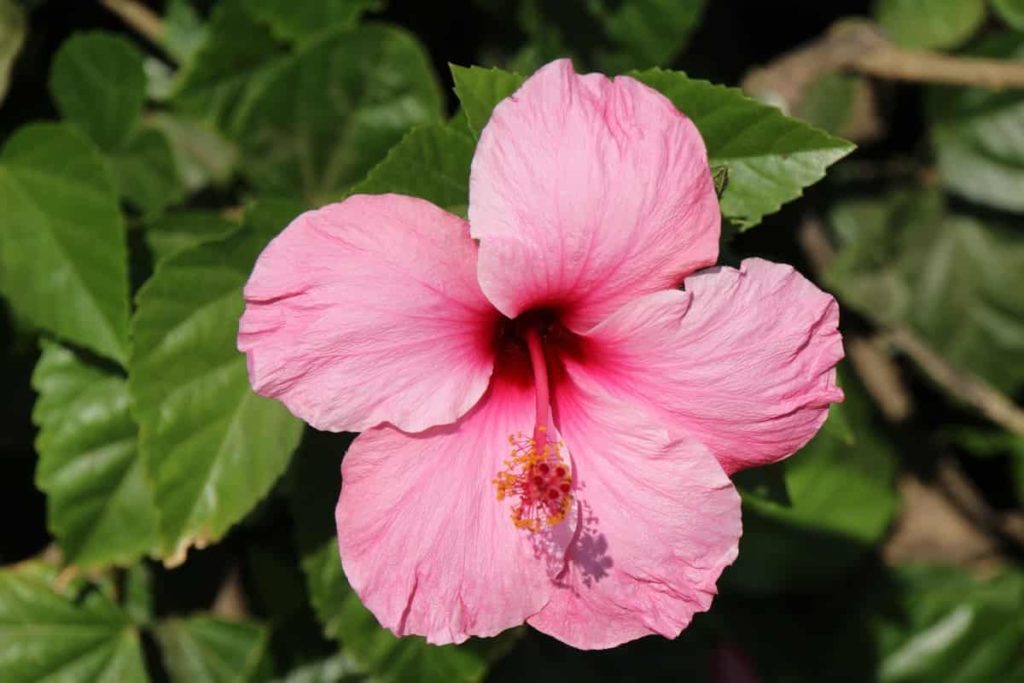
Fertilizer
Fertilize your plants with high potassium and high nitrogen fertilizer to encourage abundant, healthy blooms with good color. These plants can also be fertilized with fish emulsion and seaweed extract. During the bloom period, feed a half-strength solution every few weeks until the flowering period is over.
Protect
Protect hibiscus seedlings from strong winds after transplanting. It is best to protect them from adverse conditions until they are established, as their stems will be fragile.
Mulch
Mulching around hibiscus plants prevents soil from drying quickly and may keep the roots cooler. On hot, sunny days, the soil dries out without mulch, causing the plants to suffer. Due to this, the plant shows wilted leaves and requires heavy watering. A continuous cycle of too-dry and too-wet is unsuitable for hibiscus plants because much water is wasted through runoff or evaporation. Add 2-4 inches of mulch around hibiscus plants to prevent this. Additionally, soil insulation from heat, wind, and sunlight significantly reduces evaporation.
Mulch comes in various forms, from finely shredded bark to chunks of very coarse bark. Some companies can use rubber tires and other similar materials to make mulch products. Every few months, it is better to stir up mulch, regardless of its type. Mulch can be turned with a gardening rake or hoe. When dense matted areas are aerated, mildew and fungus are less likely to start growing.
Pruning
Pruning these showy shrubs and trees at the right time is crucial for hibiscus blooming. From the warmer end of February until mid-March, it is recommended to prune before or just after new spring growth emerges. Pruning hibiscus trees back within 1 foot of the ground will fully renovate their growth and blooming. Moreover, shearing the shrub straight across will not produce a more natural shape than cutting the stems at different, staggered heights.
Instead, remove leggy growth, prune back to the desired height, and cut just above a pair of leaves to promote bushy growth on both sides and the top. It is essential to use pruning shears that are clean and sharp when pruning hibiscus shrubs. Shears should be washed in hot, soapy water and rinsed well afterward. A 70-percent rubbing alcohol wipe can be used to kill pathogens on pruning blades.
Hibiscus propagation from Hibiscus cuttings
Tropical and hardy hibiscus are propagated from cuttings. In general, hibiscus cuttings are the preferred way of propagating hibiscus since they will grow into exact replicas of their parents. Taking hibiscus cuttings is the first step in propagating the plant. Softwood or new growth should be used for the cutting. Four to six inches is a required length for the cutting. Remove everything except the top set of leaves.
Dip the bottom cutting in the rooting hormone after trimming the stem below the bottom leaf node. For propagating hibiscus from cuttings, the next step is to plant them in soil that drains well. Ensure the rooting soil is thoroughly wet before sticking a finger. As a final step, place the hibiscus cutting into the hole and backfill it around it.
In case you missed it: How to Start Exotic Flower Farming in India: Production and Growing Guide for Beginners
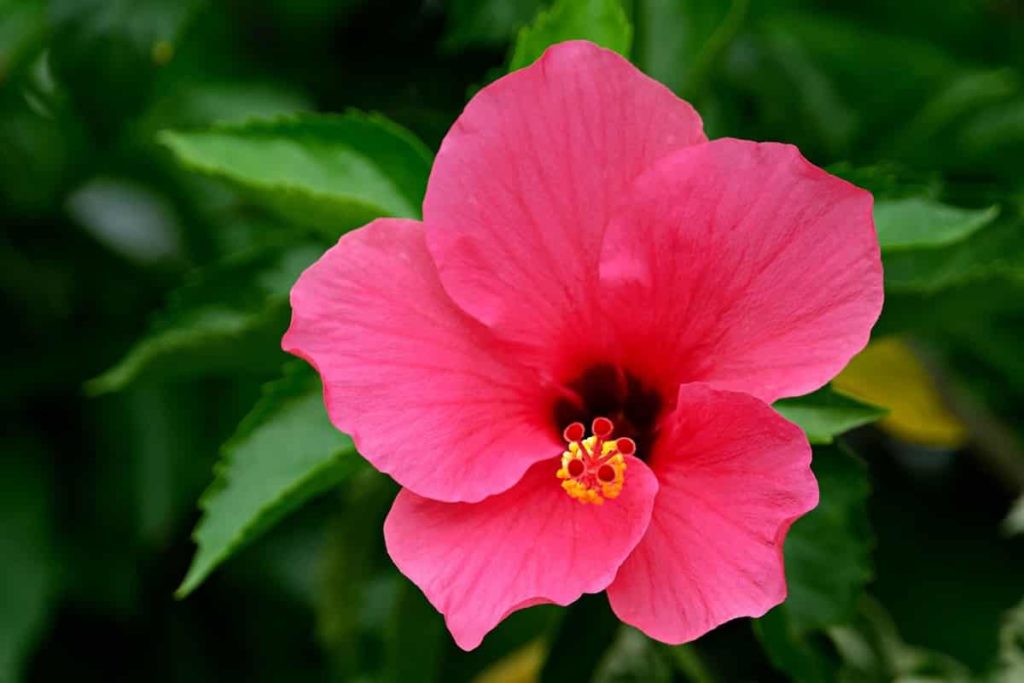
Propagating Hibiscus from seeds
It is possible to propagate tropical and hardy hibiscus from hibiscus seeds. Hardy hibiscus is generally propagated because the seeds do not grow true to the parent plant and look different. The best way to grow hibiscus seeds is to nick or sand them, which gets moisture into the seeds and makes them more likely to germinate. A utility knife, fine-grain sandpaper, or plain sandpaper can be used to nick the hibiscus seeds.
The seeds should then be soaked overnight in water. Planting the seeds in the soil is the next step in propagating hibiscus from seeds. Two times as deep as the seeds are large should be sown. A pen tip or a toothpick can be used to make a hole in hibiscus seeds since they are small.
Common Hibiscus diseases
When a plant gets a disease, it is affected from the inside out. It is often found in the soil or roots. Poor environmental conditions, fungi, and bacteria can cause diseases. Here are three of the most common diseases that affect our beautiful hibiscus.
- Dieback Disease
- Wilt Disease
- Spots and Yellowing Leaves
Common pest problems of Hibiscus
The majority of hibiscus plants become infected by insects as a result of poor management. Plants will become healthier and more resistant to pests if watered and fed adequately.
- Aphids
- Whiteflies
- Spider Mites
- Mealybugs
- Scale
- Ants
- Root Knot Nematode
Conclusion
The well-defined structure of the hibiscus makes it a perfect flower. Because the female reproductive pistil has an ovary with five chambers from which the petals emerge, the petals are separate without touching each other. Your garden will be brightened with vibrant blooms when you grow vibrant hibiscus. Following these planting and maintenance tips, you can enjoy abundant, vibrant blooms and healthy, vigorous hibiscus plants all summer long.
- Economical Aquaculture: A Guide to Low-Budget Fish Farming
- 15 Common Planting Errors That Can Doom Your Fruit Trees
- How to Make Houseplants Bushy: Effective Tips and Ideas
- Innovative Strategies for Boosting Coconut Pollination and Yield
- Pollination Strategies for Maximum Pumpkin Yield
- The Complete Guide to Chicken Fattening: Strategies for Maximum Growth
- Natural Solutions for Tulip Problems: 100% Effective Remedies for Leaf and Bulb-Related Issues
- Revolutionizing Citrus Preservation: Towards a Healthier, Greener Future
- Natural Solutions for Peony Leaf and Flower Problems: 100% Effective Remedies
- Maximizing Profits with Avocado Contract Farming in India: A Comprehensive Guide
- Natural Solutions for Hydrangea Problems: 100% Effective Remedies for Leaf and Flowers
- The Ultimate Guide to Choosing the Perfect Foliage Friend: Bringing Life Indoors
- From Sunlight to Sustainability: 15 Ways to Use Solar Technology in Agriculture
- The Ultimate Guide to Dong Tao Chicken: Exploring from History to Raising
- The Eco-Friendly Makeover: How to Convert Your Unused Swimming Pool into a Fish Pond
- Mastering the Art of Delaware Chicken Farming: Essentials for Healthy Backyard Flocks
- 20 Best Homemade Fertilizers for Money Plant: DIY Recipes and Application Methods
- How to Craft a Comprehensive Free-Range Chicken Farming Business Plan
- Brighten Your Flock: Raising Easter Egger Chickens for Beauty and Bounty
- How to Optimize Your Poultry Egg Farm Business Plan with These Strategies
- Subsidy for Spirulina Cultivation: How Indian Government Schemes Encouraging Spirulina Farmers
- Ultimate Guide to Raising Dominique Chickens: Breeding, Feeding, Egg-Production, and Care
- Mastering the Art of Raising Jersey Giant Chickens: Care, Feeding, and More
- Ultimate Guide to Raising Legbar Chickens: Breeding, Farming Practices, Diet, Egg-Production
- How to Raise Welsummer Chickens: A Comprehensive Guide for Beginners
- How to Protect Indoor Plants in Winter: A Comprehensive Guide
- Ultimate Guide to Grow Bag Gardening: Tips, Tricks, and Planting Ideas for Urban Gardeners
- Guide to Lotus Cultivation: How to Propagate, Plant, Grow, Care, Cost, and Profit
- Agriculture Drone Subsidy Scheme: Government Kisan Subsidy, License, and How to Apply Online
- Ultimate Guide to Raising Araucana Chickens: Breed Profile, Farming Economics, Diet, and Care
- Bringing Hydroponics to Classroom: Importance, Benefits of Learning for School Students
- Ultimate Guide to Raising Polish Chickens: Breed Profile, Farming Economics, Diet, and Care
- Ultimate Guide to Raising Australorp Chickens: Profile, Farming Economics, Egg Production, Diet, and Care
- Silkie Chicken Farming: Raising Practices, Varieties, Egg Production, Diet, and Care
- Sussex Chicken Farming: Raising Practices, Varieties, Egg Production, Diet and Care
- Homemade Feed Formulations for Livestock: Discover Cost-effective Starter to Finisher Feed Recipes